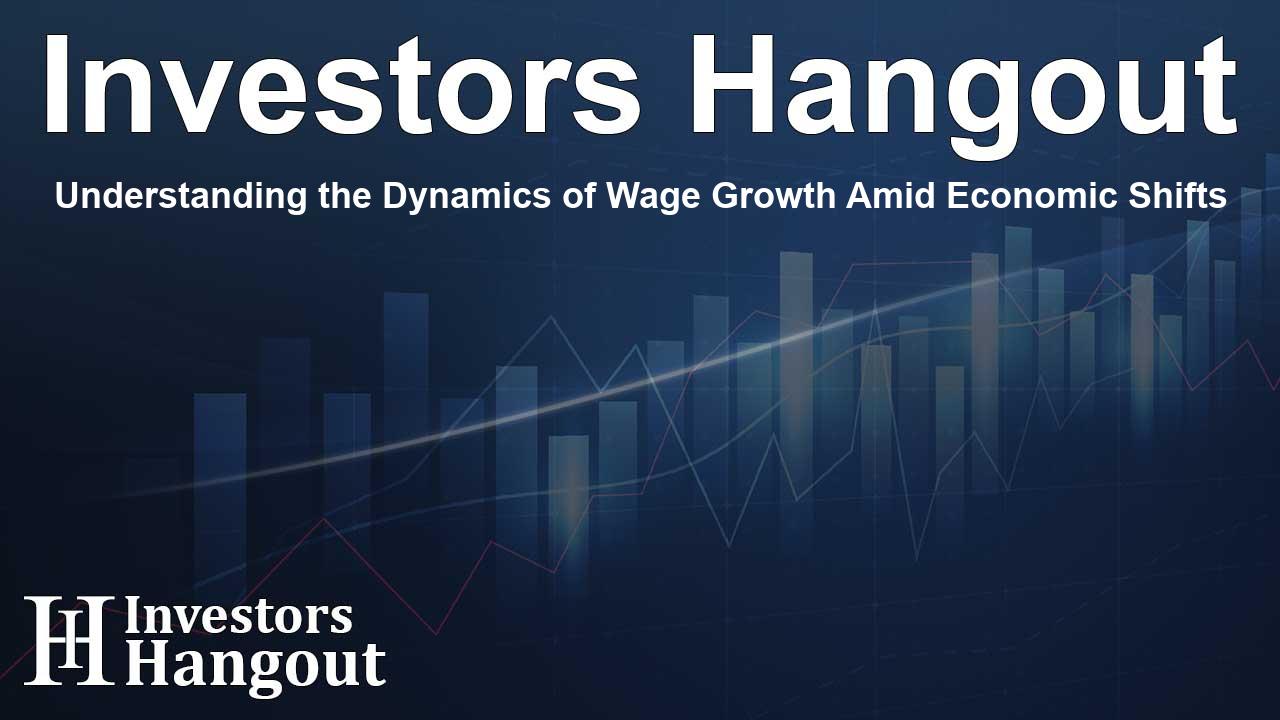Understanding the Dynamics of Wage Growth Amid Economic Shifts

Current Economic Landscape and Wage Dynamics
The recent economic landscape displays a complex mix of signals. Despite evidences of slowing economic momentum, wage growth remains unexpectedly solid. The labor market is undergoing transitions, influenced by various factors ranging from policy changes to global economic conditions. As job growth shows signs of deceleration, the upward trajectory of wages is particularly noteworthy and invites scrutiny into the underlying dynamics.
Job Growth Trends and Revisions
Recent reports indicate a marked slowdown in job growth. Initially, data suggested robust growth during the early summer months, specifically May and June. However, subsequent revisions disclosed considerable downward adjustments to those earlier assessments. The average job growth rate over three months has plummeted from approximately 150,000 to just 35,000, a downward shift that aligns with other economic indicators suggesting a slowdown.
Interpreting Labor Market Adjustments
This decline isn't just an unexpected number; it signifies deeper trends within the labor market. Delving into the revisions reveals a considerable reduction in employment figures for May and June, attributed primarily to updated data collections and seasonal adjustments. These changes highlight the labor market's vulnerability to shifting policy directions and economic pressures.
Wage Growth Despite Slowing Job Numbers
What remains fascinating is the resilience of wage growth in the face of these adjustments. The Employment Cost Index indicates that hourly compensation has seen modest growth over the last quarter, even amid a shrinking job market. This steadfast increase in wages hints at a tightening labor supply rather than merely a decrease in demand for workers.
Implications of Labor Supply Changes
Several factors contribute to the current labor supply scenario. Firstly, changes in immigration policies have reduced the number of available workers in the job market, exacerbating the existing demand for labor. Increased restrictions and reduced inflows of immigrant labor following recent policy shifts are critical in understanding these dynamics. Additionally, an aging population further compounds the struggle in meeting labor demands.
Fed Officials' Perspectives on Job Market Trends
Insights from Federal Reserve officials further illuminate the ongoing discourse surrounding job growth. New York Fed President John Williams characterized the current trends as a gradual cooling of the job market rather than a drastic downturn. Similarly, San Francisco Fed President Mary Daly emphasized that while the job market is not precariously weak, further softening could disrupt positive momentum.
The Balance Between Demand and Supply
The delicate equilibrium between labor demand and supply is at the forefront of discussions among economists. A slowdown driven by demand—stemming from uncertainty in government policies and economic outlook—could signal diminishing utilization of available labor. Conversely, reduced supply could tighten the labor market, prompting wage increases despite lower job growth figures.
Conclusion: Future Directions for Wage Growth and Employment
In summary, the interplay between job growth and wage dynamics forms a critical aspect of our economic narrative. Slower job growth does not solely indicate a struggling labor market; it also reflects significant changes in labor supply. As we move forward, understanding these intricate connections will be essential for predicting labor market adjustments and the policy responses required to foster a balanced economy.
Frequently Asked Questions
What factors contribute to the recent wage growth despite slower job growth?
Wage growth may be attributed to a tightening labor supply, with factors such as reduced immigration and an aging workforce playing significant roles.
How do revisions in job growth impact the perception of the labor market?
Revisions in job growth provide a clearer picture of labor market trends, indicating potential vulnerabilities and the need for policy adjustments.
What is the Fed's stance on the current job market situation?
Fed officials observe a gradual cooling of the job market, noting that while it isn't excessively weak, further softening is a concern.
How does immigration policy affect labor supply?
Changes in immigration policy directly impact labor supply by restricting the inflow of workers, which can lead to labor shortages in various sectors.
What role do policymakers play in managing the labor market?
Policymakers are crucial in shaping economic conditions that influence labor supply and demand through regulations, interest rates, and fiscal measures.
About The Author
Contact Thomas Cooper privately here. Or send an email with ATTN: Thomas Cooper as the subject to contact@investorshangout.com.
About Investors Hangout
Investors Hangout is a leading online stock forum for financial discussion and learning, offering a wide range of free tools and resources. It draws in traders of all levels, who exchange market knowledge, investigate trading tactics, and keep an eye on industry developments in real time. Featuring financial articles, stock message boards, quotes, charts, company profiles, and live news updates. Through cooperative learning and a wealth of informational resources, it helps users from novices creating their first portfolios to experts honing their techniques. Join Investors Hangout today: https://investorshangout.com/
The content of this article is based on factual, publicly available information and does not represent legal, financial, or investment advice. Investors Hangout does not offer financial advice, and the author is not a licensed financial advisor. Consult a qualified advisor before making any financial or investment decisions based on this article. This article should not be considered advice to purchase, sell, or hold any securities or other investments. If any of the material provided here is inaccurate, please contact us for corrections.
